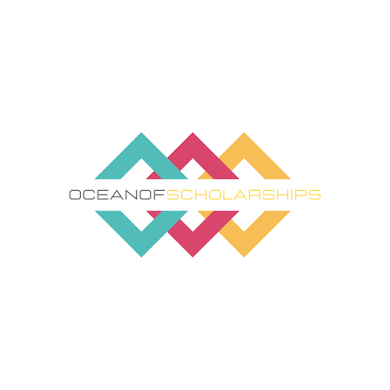Personalized Protection: Reimagining Mutual Insurance for Individualized Needs
Mutual insurance in the United States has long been a pillar of financial security, offering coverage for a wide range of risks.
However, a growing desire among policyholders for more personalized insurance solutions tailored to their individual circumstances has emerged as a prominent challenge.
In this article, we explore the evolving landscape of mutual insurance, analyze the reasons behind the demand for personalized solutions, and propose innovative strategies to meet the unique needs of policyholders while maintaining the collective principles of mutual insurance.
Challenges of Generic Insurance Solutions:
- One-Size-Fits-All Approach: Traditional mutual insurance models often employ a one-size-fits-all approach, providing generic coverage options that may not align with the diverse and unique needs of individual policyholders. This approach can result in either insufficient coverage or unnecessary expenses for certain individuals.
- Limited Flexibility in Policy Structures: Rigidity in policy structures limits the flexibility of mutual insurance offerings. Policyholders may find it challenging to customize their coverage based on specific circumstances, leading to a gap between the provided coverage and their actual needs.
- Generic Risk Assessment Models: Generic risk assessment models may not capture the nuanced and individualized factors that influence an individual’s risk profile. As a result, policyholders may be placed into broad risk categories rather than having their unique circumstances considered, impacting premium pricing and coverage availability.
- Changing Socioeconomic Dynamics: Shifts in socioeconomic dynamics, lifestyle choices, and work patterns have created a need for insurance solutions that adapt to the evolving circumstances of policyholders. The desire for more personalized coverage reflects a growing awareness of the limitations of traditional, inflexible insurance structures.
- Advancements in Technology and Data Availability: The digital age has brought forth an abundance of data and technological advancements that can be leveraged for more accurate risk assessments. Policyholders now expect insurers to harness these tools to tailor coverage based on real-time information and individual circumstances.
Solutions for Personalized Insurance Solutions:
- Utilization of Advanced Data Analytics: Incorporating advanced data analytics allows mutual insurance providers to analyze vast datasets, enabling more precise risk assessments. These analytics can consider individual characteristics, behaviors, and external factors, leading to personalized coverage offerings.
- Tailored Underwriting Processes: Implementing tailored underwriting processes involves assessing individual risk profiles more comprehensively. By considering factors beyond traditional demographics, insurers can offer coverage that aligns with the unique circumstances of each policyholder.
- Dynamic Policy Structures: Introducing dynamic policy structures allows policyholders to adjust their coverage based on changing circumstances. This flexibility accommodates life events, such as the purchase of a new home or changes in family size, ensuring that insurance coverage remains relevant over time.
- Integration of Telematics and IoT Devices: Leveraging telematics and Internet of Things (IoT) devices provides a wealth of real-time data. For example, usage-based insurance for vehicles can use telematics to assess driving behavior, leading to personalized premiums that reflect individual risk levels.
- Customizable Coverage Modules: Offering customizable coverage modules enables policyholders to select specific coverage elements that align with their needs. This modular approach allows for a tailored insurance package that addresses individual concerns without unnecessary coverage.
- Adoption of Artificial Intelligence (AI): AI technologies can enhance the personalization of insurance solutions by analyzing vast datasets and identifying patterns specific to individual policyholders. This can result in more accurate risk assessments and personalized policy recommendations.
- Collaboration with Insurtech Innovators: Engaging with insurtech innovators allows mutual insurance providers to tap into cutting-edge technologies and solutions. Collaborations can lead to the development of personalized tools, apps, or platforms that enhance the overall insurance experience for policyholders.
- Transparent Communication on Personalization: Maintaining transparent communication about the personalization of insurance solutions is crucial. Mutual insurance providers should clearly articulate how individual data is used, how premiums are determined, and the benefits of personalized coverage to build trust with policyholders.
- Education on Personalized Risk Mitigation: Educating policyholders on the importance of personalized risk mitigation strategies can empower them to make informed decisions. Mutual insurance providers can offer resources, guidelines, and educational materials to help policyholders understand how certain choices impact their coverage and premiums.
- Feedback Mechanisms for Continuous Improvement: Implementing feedback mechanisms allows mutual insurance providers to gather insights from policyholders. Regular surveys, focus groups, and direct communication can provide valuable information on the effectiveness of personalized solutions and areas for improvement.
Conclusion:
The desire for more personalized insurance solutions in mutual insurance reflects a shift in expectations among policyholders.
By embracing advanced data analytics, tailored underwriting processes, dynamic policy structures, telematics and IoT integration, customizable coverage modules, AI adoption, collaboration with insurtech innovators, transparent communication, education on personalized risk mitigation, and feedback mechanisms, mutual insurance providers can navigate this shift effectively.
The goal is to create a modern, customer-centric insurance landscape where coverage is not only comprehensive but also tailored to the unique needs and circumstances of each individual policyholder, ensuring the continued relevance and success of mutual insurance in the evolving marketplace.
















0 Comments